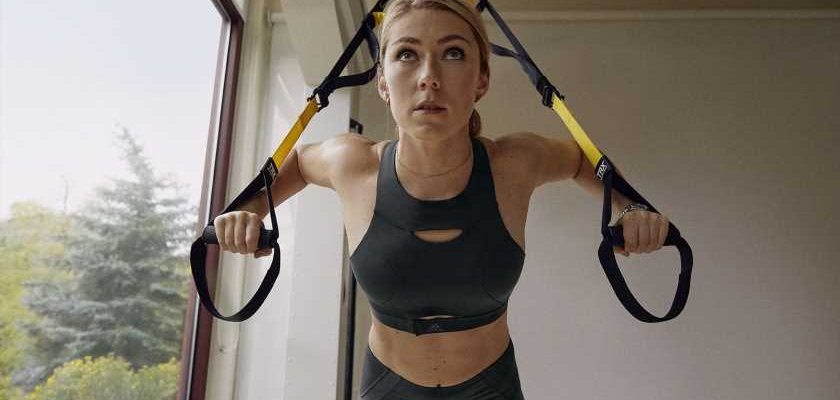A reliable sports bra should keep you comfortable and supported during a workout, but different types of exercise require different kinds of support.
I must own at least 20 different sports bras. From secure, high-support sports bras designed specifically for running to sleek, high-neck, sweat-wicking sports bras for strength training and strappy, stretchy, super soft bras for yoga and pilates – I’m a firm believer that a correctly fitting sports bra can reduce breast pain (and make exercising a lot more enjoyable).
With studies showing breasts can undergo damaging skin stretch without the right sports bra, and widespread dissatisfaction amongst everyday and elite athletes (90% of women have been reported to be wearing the wrong size sports bra while 44% of female athletes reported movement-related breast pain from a lack of breast support), we caught up with Professor Joanna Wakefield-Scurr, professor in biomechanics and head of the research group in breast health at the University of Portsmouth – who’s recently collaborated with adidas on their new range of sports bras, available worldwide from 14 February – to help shine a light on why sufficient breast support during different types of exercise is crucial.
You may also like
Best activewear: the 7 best sports bras for every chest size, according to the Strong Women team
Why are sports bras so important?

“The breast moves excessively during sporting activity,” explains Prof Wakefield-Scurr. “In fact, breasts can move up to 19cm during strenuous exercise if not properly supported. And they don’t just move up and down, but in all directions – in a butterfly pattern.
“If breasts are not properly supported during running they could experience the same G-force as an F1 driver – so that’s very high accelerations that occur in the breast tissue.
“It’s not only about reducing movement but from a scientific perspective, we’re also looking at how to reduce the speed at which the breast moves and the acceleration of the breast. If we don’t do that, then actually we can start to cause damage to the breast tissue.
“The breast has very delicate skin – the skin on the top part of the breast is very thin, and has the potential to be damaged if we don’t support the breast properly. And by damage, I mean that the skin stretches and stretches and stretches and eventually it doesn’t return to its original position. So wearing a sports bra is very much about prevention. Because once that skin is stretched, there’s nothing we can do about it.”
Poor bra support = poor sports performance
“We’ve done a lot of research on this in our lab – looking at how the movement of the breast can actually change the way that we move,” says Prof Wakefield-Scurr. “If the breasts move a lot, they can actually change our running mechanics, for example, they can shorten our stride. We actually saw a four-centimetre reduction in stride length when women ran wearing poor support. And while four centimetres might not sound like very much if you looked at that over a marathon distance, four centimetres would equate to a mile, so you’d actually lose a mile because of running wearing a poor sports bra.”
“We know that there’s definitely the potential – if you get your sports bar right – to improve your sports performance. Everything from making you more efficient, it changes your heart rate, it changes your breathing frequency, it changes your mechanics. So from a performance perspective, it’s really important to get that support right.”
You may also like
Sports bras: do our sports bra and breast support needs change with age?
What sort of sports bra do you need for running?
“For higher intensity activities – like running – that involve dynamic movement, then you really want a sports bra that’s going to support you really effectively, so you’re looking for a sports bra that has less stretch in it. Something that’s more structured, and often something that can separate the breasts – so they’re not just compressing the breast tissue to the chest wall but actually separating, holding and lifting each breast for that type of activity. For the really high dynamic types of activity, you want something that has less stretch and more rigid cups.”

What sort of sports bra do you need for strength training?
“Strength training tends to be less dynamic,” says Prof Wakefield-Scurr. “So you want a bra that has more flexibility to allow movement in the upper body – perhaps a bra with a bit more stretch in it. Look for a moisture-absorbing sports bra made from breathable fabrics and sweat-wicking materials in targeted areas where sweat builds up. You also want a sports bra with minimal componentry – no one wants a huge hook and eye digging in when doing a bench press or similar.”
Why a ‘one-bra-fits-all’ approach doesn’t work
“It’s really important, from a breast health perspective, to match the bra to the type of activity a woman is undertaking,” she explains. “I think there is a danger in women assuming that one sports bra is going to work for every different type of activity that they undertake – and that could range from horse riding to running to pilates. But we’ve seen in our laboratory that the upper body moves differently in different sporting activities, and therefore, we require different types of support for different activities.”
Follow @StrongWomenUK on Instagram for the latest workouts, delicious recipes and motivation from your favourite fitness experts.
Images: adidas
Source: Read Full Article
